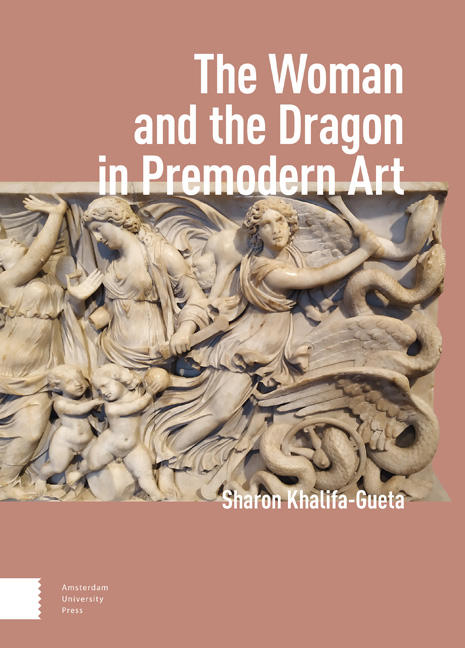Book contents
- Frontmatter
- Contents
- Acknowledgments
- Introduction
- 1 The Dragon
- 2 The Cave and the Womb: The Myth of Cadmus and the Myth of Apollo and Python
- 3 Eligible Wives and Monstrous Women: Andromeda and Medusa
- 4 Medea – The Holy Woman and the Witch
- 5 Eve and Lilith — Christianizing the Great Goddess and the Dragon
- 6 Saint Margaret – Taming the Dragon
- Conclusion
- Bibliography
- Index
5 - Eve and Lilith — Christianizing the Great Goddess and the Dragon
Published online by Cambridge University Press: 17 February 2024
- Frontmatter
- Contents
- Acknowledgments
- Introduction
- 1 The Dragon
- 2 The Cave and the Womb: The Myth of Cadmus and the Myth of Apollo and Python
- 3 Eligible Wives and Monstrous Women: Andromeda and Medusa
- 4 Medea – The Holy Woman and the Witch
- 5 Eve and Lilith — Christianizing the Great Goddess and the Dragon
- 6 Saint Margaret – Taming the Dragon
- Conclusion
- Bibliography
- Index
Summary
Abstract: Eve is a key figure for understanding the perception of women in Western Europe throughout the medieval and early modern periods. Examining this figure from the perspective of the woman and dragon motif reveals her unique relationship with the serpent of Eden. Comparing her iconography to that of the Hesperides elucidates Christianity's misogynistic stereotypes, and demonstrates the shift it instigated in attitudes toward woman. The anguiped serpent represented in the story of Eden is analyzed in the context of Eve's iconography and of its association with Lilith. Outlining the development of the she-demon motif in magical amulets and its relation to the Eden iconography, this chapter addresses the connection between women and dragons in the context of femininity and childbirth rituals.
Key Words: Eve, Serpent of Eden, anguiped, Lilith, childbirth, stereotype.
Having explored the motif of the woman and the dragon in ancient Greco-Roman art and culture, in the current chapter I turn to examine the question of its endurance and transformation over time in the Christian culture of Western Europe. The following discussion will center on the evolution of Eve's image from late antiquity through the medieval period to early modernity, with an emphasis on the split between the traditional iconography of the Fall, which is based on the biblical narrative, and the iconography of a hybrid female-dragon that I identify as Lilith. As this discussion will demonstrate, the dualistic split between good and evil within Christianity, which consigned the dragon to the role of a hostile creature associated with the devil, cast a negative light on the relationship between women and dragons, which came to be similarly associated with evil. Nevertheless, as the following examples will reveal, the ambivalent nature of this union as both positive and negative persisted, particularly in folk traditions and beliefs, as given expression most notably in apotropaic images.
This analysis begins with a reading of the narrative of Eve and her visual representation in the context of the biblical creation myth and the story of Eden. This story, whose origins go back to the beginning of the first millennia BCE, appears to have arisen in opposition to serpent cults, particularly those with female goddesses associated with genesis or fertility, which were popular in the ancient Near-Eastern and Greco-Roman worlds.
- Type
- Chapter
- Information
- The Woman and the Dragon in Premodern Art , pp. 193 - 226Publisher: Amsterdam University PressPrint publication year: 2023

